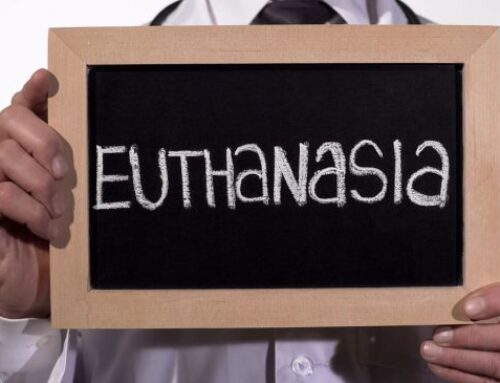In March 1992, in a Florida hospital, Theresa Ann Campo Pearson was born with anencephalia, a rare condition in which most of the upper skull and brain cortex are missing, but in which the partially developed brain stem can still produce breathing and a heartbeat.
The parents – anticipating baby Theresa’s death in a matter of days – asked a Florida court to authorize doctors to speed up the inevitable and to take Theresa’s healthy organs for transplantation (thus killing her) in advance of her natural death. Anencephalics normally die within hours or days, but lawyers for the parents argued that waiting for natural death might result in a deterioration of the organs to be transplanted.
Circuit Court Judge Estella Moriarty ruled that a Florida statute does not allow a person to be declared dead while any part of the brain is functioning. The judge told the parents: “I can’t authorize someone to take your baby’s life, however short, however unsatisfying, to save another child.” Baby Theresa died of respiratory failure during her tenth day of life.
Intentions of the parties
It is important to understand what was and what was not the intent of the legal/media/euthanasia coalition supporting the “right” of the parents to have anencephalic baby Theresa killed for her organs.
First, as in the 1987 case of the Canadian baby Gabrielle, it was not really the intent of this coalition to make the organs of anencephalic babies available for transplant.
Wanda Bond, a spokesperson for United Network for Organ Sharing, a private, non-profit group in Richmond, Va. that links organ transplant centers in the United States, remarked about the case:
“We have no interest in it from the organ procurement side because of all the problems associated with it. It’s such a small number of individuals that could be helped (our emphasis) that the question is, ‘Does it make sense to go through all this?’
“Clearly, in the medical community the answer is it doesn’t.” (from the New York Times, reprinted Montreal Gazette, March 31, 1992.)
The same New York Times article concluded that “the number of potential organs that could be donated in such situations would be too low to justify undertaking the enormous legal and moral issues involved.”
Reporter Sabra Chartrand, writing in the New York Times several days earlier (Montreal Gazette, March 29, 1992), underlined the fact that procuring organs for transplant was not driving the baby Theresa court case: “Medical experts agree that any change in brain-death policy could undermine public trust in the nation’s entire organ-donor program, which already has difficulty getting people to donate organs. They argue that Americans are already wary of donor programs because of a popular perception that organs might be taken before a person is really dead.” (emphasis added)
Real intent
This disarmingly candid admission brings us to the real intent of the coalition pushing the Baby Theresa court case. Chartrand reports that pro-life groups “argue that, if such babies are excluded from the legal criteria fro death, it might be a matter of time before other medical conditions also are omitted.”
Toronto researcher Eugene Pivato, in his booklet Experimentation on Preborn and Newborn Children, amplifies this concern:
Some researchers and ethicists are now arguing that anencephalics are no persons – the same type of argument first used to deny the preborn child’s right to life. Those in favor of harvesting organs from anencephalics argue that “personhood” is based on the ability to think, and since anencephalics are missing most of their brain, they cannot be classified as people with legal rights. Of course, such a ridiculously narrow definition would also take away the right to life of all newborn babies as well as people with degenerative mental conditions.
“The problem is one of a slippery slope,” said Dr. Norman Fost, a pediatrician who is the director of the University of Wisconsin’s medical ethics program.
The pro-abortion, pro-euthanasia lobby sought through the baby Theresa case to expand the classes of people who can legally be put to death. In the past they have worked both ends of the time continuum – against the right to practice infanticide – first against newborns with severe handicaps – and then against newborns and others with any handicap at all!




